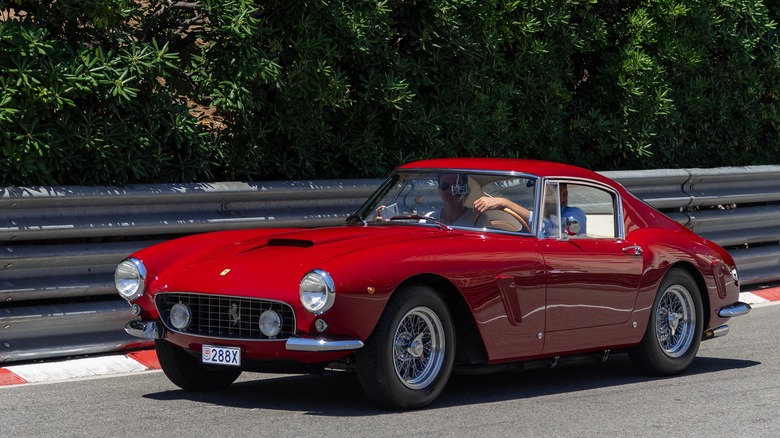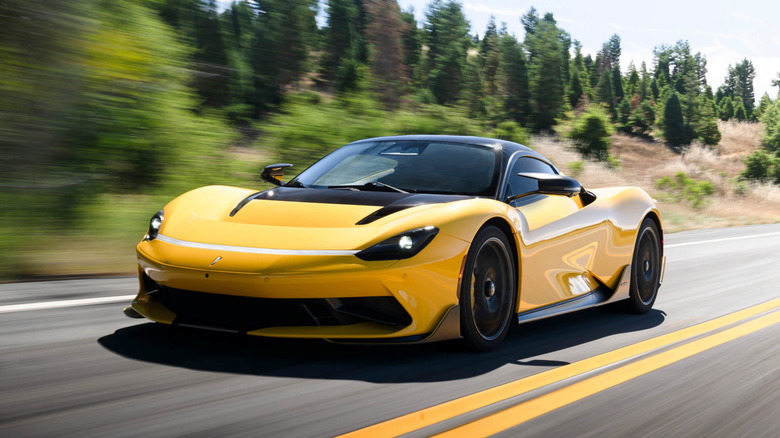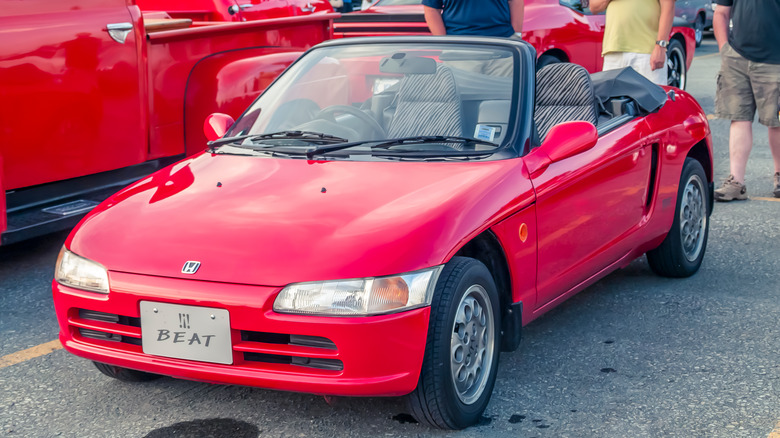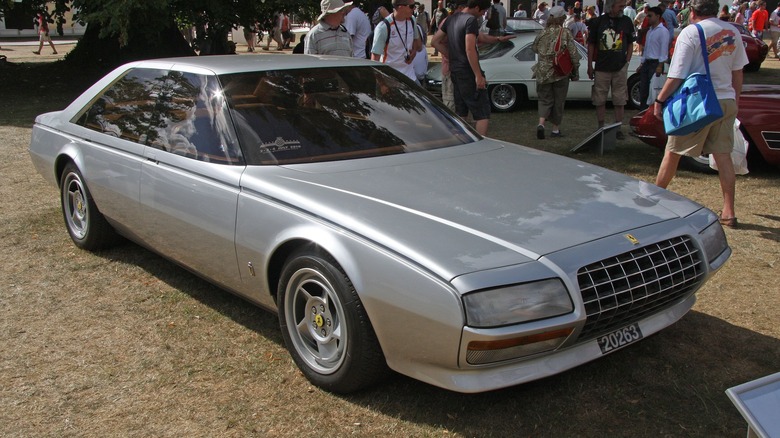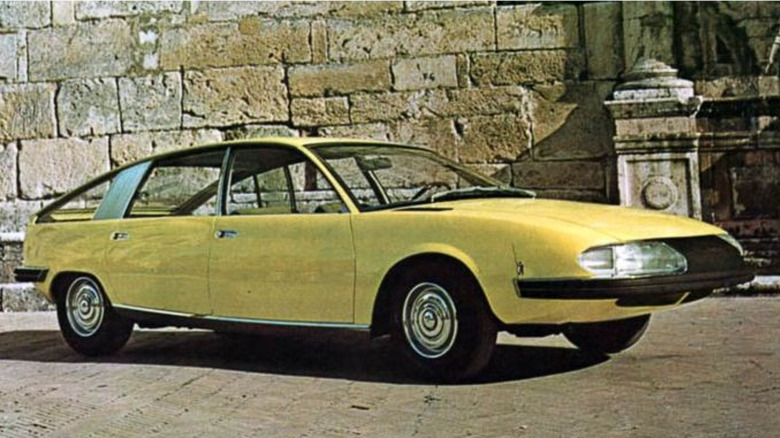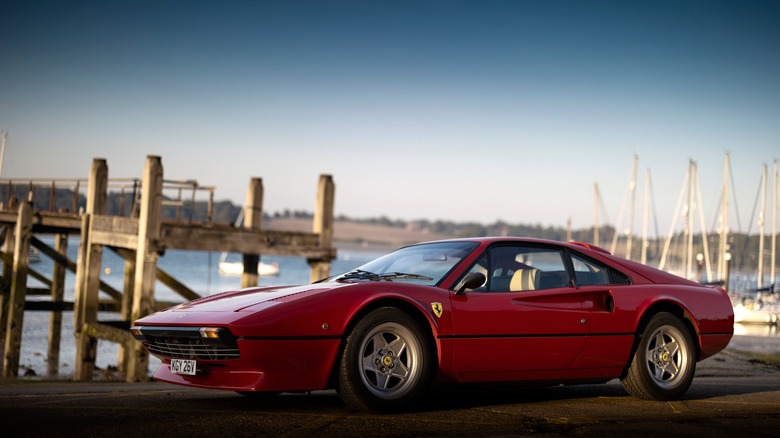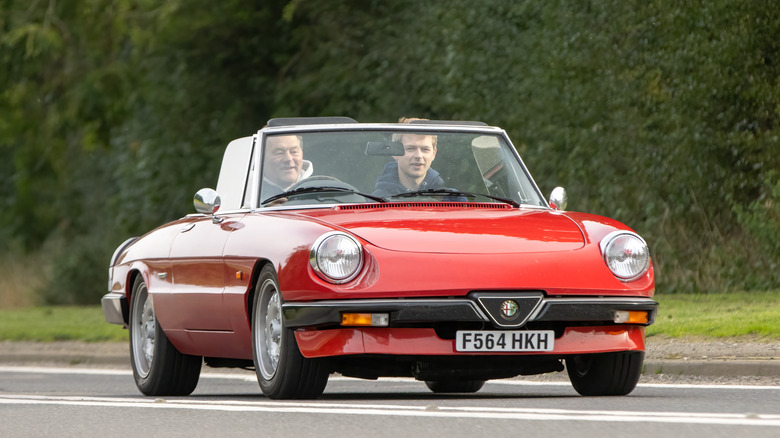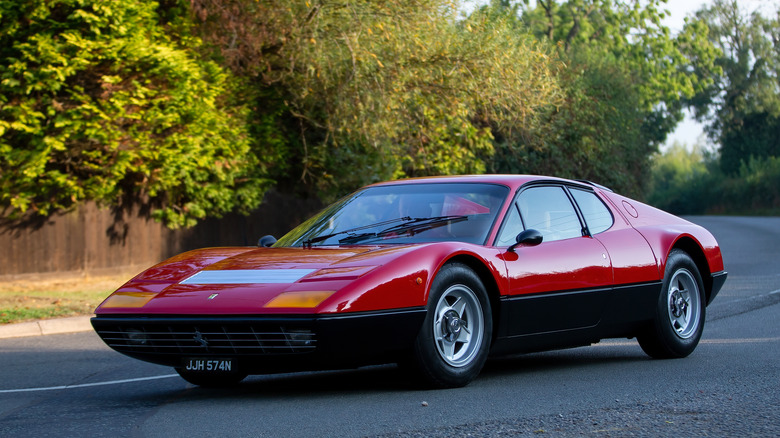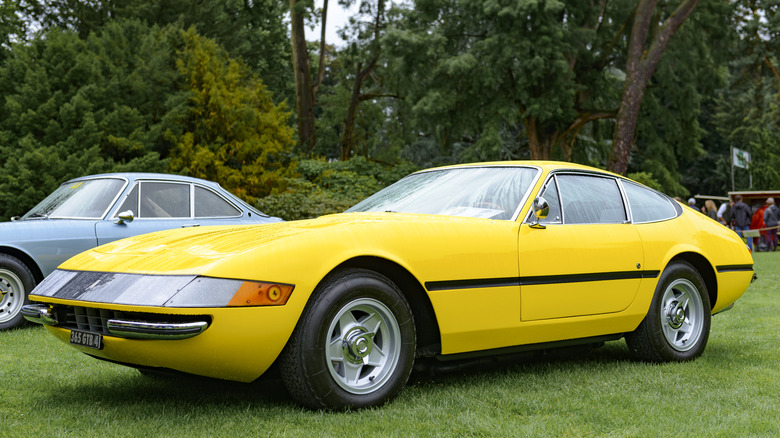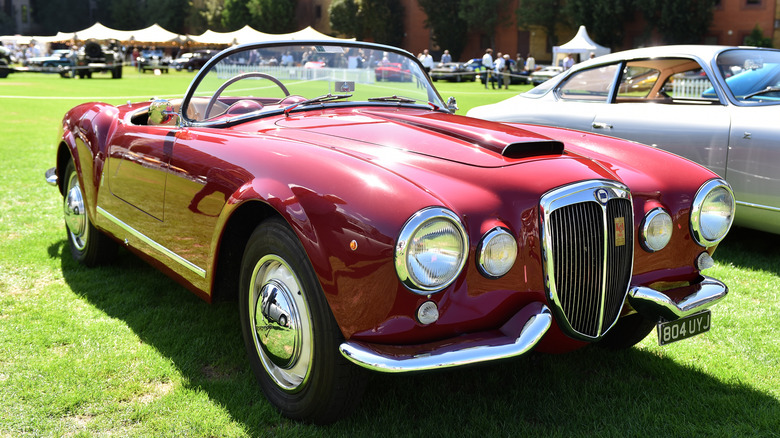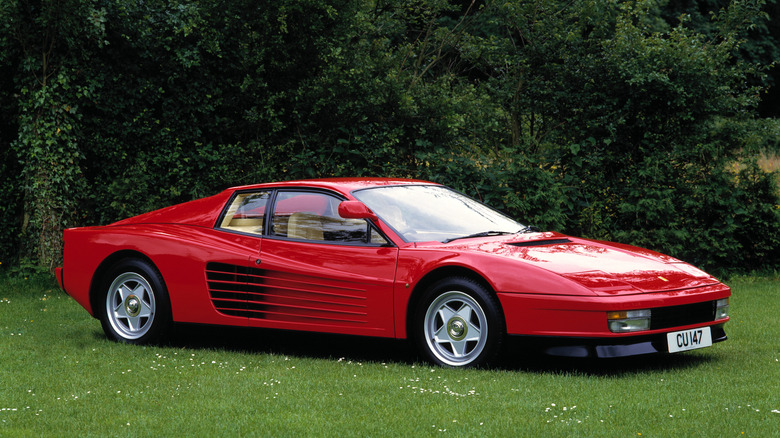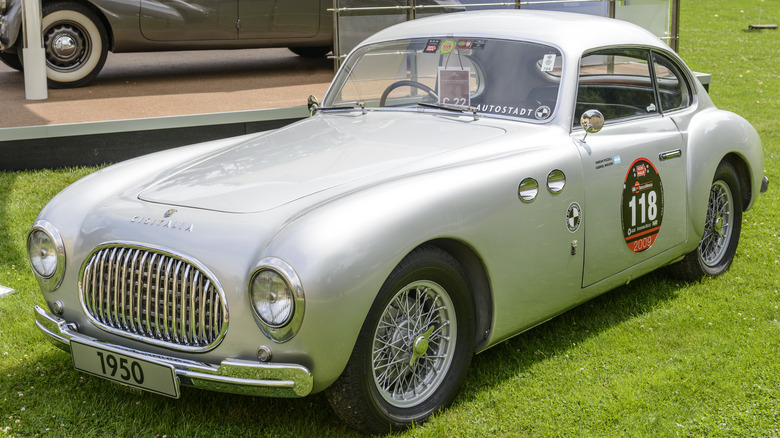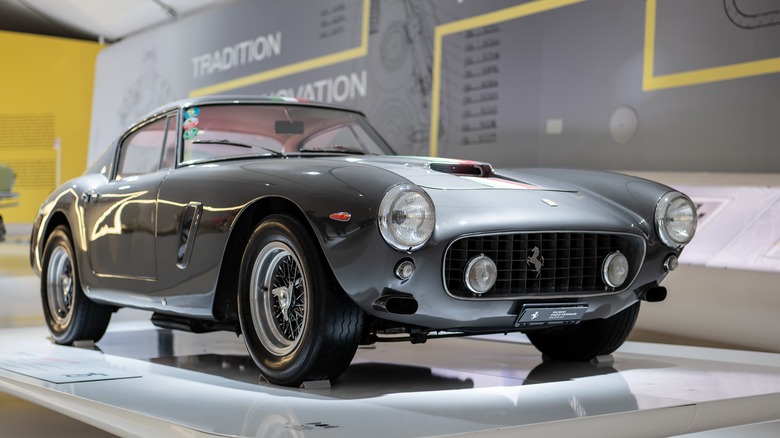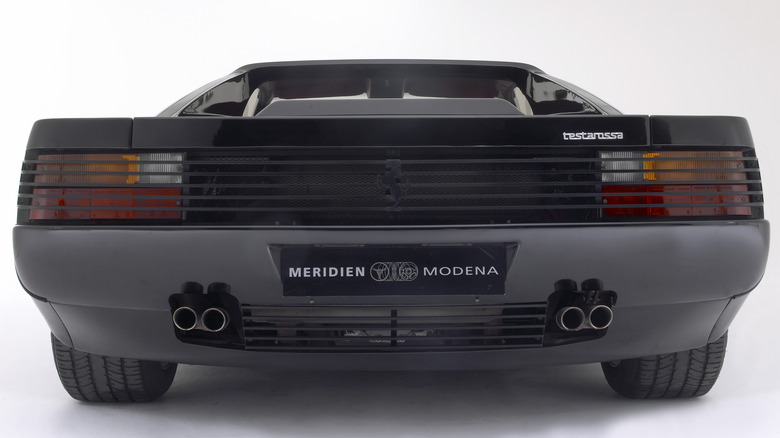12 Of The Greatest Cars Ever Designed By Pininfarina, Ranked
Pininfarina is one of the most famous automotive design studios and coachbuilders, responsible for some of the finest-looking cars in history. However, the company also has a track record of innovation and boundary-pushing in the industry. Thanks in part to Pininfarina, today we have cars that cut more efficiently through the air.
Pininfarina pushed the industry forward by designing legendary cars, most of which still inspire us today. For almost a century, the design studio collaborated with manufacturers like Ferrari, Alfa Romeo, Lancia, Peugeot, and more, helping them put a bigger stamp on the automotive sector and become more recognizable. Crucially, Pininfarina-designed cars still grace roads, car shows, and racetracks today, most of them becoming desirable collector items.
With that said, which are the greatest cars ever designed by Pininfarina? In this feature, we will answer that question by telling you the coachbuilder's story through the cars it designed. Each of the cars listed here has a certain historical significance, be it for the automaker or the industry as a whole. Not only that, but these models show the artistry and skill of Pininfarina's designers in turning cars into works of art. Let's have a closer look!
12. 2019 Pininfarina Battista
Automobili Pininfarina's latest creation carries the name of its founder, signifying a new starting point for the design studio but also the industry as a whole. An outrageous electric hypercar, the Battista is a paradigm shift for the industry in terms of design and performance. It is based on the Rimac Nevera, sharing its extraordinary 1,900-hp, four-motor powertrain, which catapults Pininfarina's futuristic creation to 62 mph in just 1.86 seconds. That is world-beating, yes, but the real torque vectoring, courtesy of the four independent electric motors, is even more impressive, providing earth-shattering grip in the corners.
However, it is Pininfarina's touch that makes the Battista special. Nobody would call the Nevera ugly, but it isn't exactly striking to look at. The Battista is much more attractive, with a sharper front end, a more cohesive side profile, and a futuristic rear end with "flowing" taillights. The glass canopy that covers the cabin adds to the visual drama, strengthened by the muscular haunches. If this is how future electric sports cars will look, we are up for it!
11. 1991 Honda Beat
The first-gen Honda Beat shows that fun-to-drive thrills can arrive in small packages. A Kei sports car, the Beat packs a rather unusual three-cylinder 660cc engine with Honda's MTREC (Multi Throttle Responsive Engine Control), aka individual throttle bodies. Thus, although producing only 64 hp, Beat's engine can rev to 8,100 rpm and sounds like a supercar engine — you could argue it sounds better than most supercars today. Besides being a mid-engine roadster with a five-speed manual, Honda's small kei fun machine has all the ingredients to keep the driver happy.
The cherry on top is Pininfarina's styling. Although Pininfarina designer Pavel Hušek didn't have a lot of sheet metal to work with, the end result is a tiny sports car that also has the looks of a supercar of the era. The thin headlights, side cooling vents, and spoiler in the back created a very attractive sports car. Thus, the Honda Beat remains the most desirable kei sports car from the era, with a combination of driving dynamics, sound, and looks that are hard to beat.
10. 1980 Ferrari Pinin
Pininfarina celebrated its 50th birthday as a styling house and coachbuilder with the Ferrari Pinin while also honoring its founder, Battista Pinin Farina. Crucially, the company also foretold the modern "super-saloon" with this concept. Ultra-fast four-door coupes like the Mercedes-AMG GT 4-door Coupe and Porsche Panamera follow the same recipe as the Ferrari Pinin.
Interestingly, Ferrari never built a four-door coupe, so the Pinin is probably the best concept from the brand that never made it to production. Besides, it is the only example carrying the prancing horse badge. It is a very cleanly designed car, perfectly blending futurism and minimalism. A notable feature is the hidden door pillar, which makes it look like the sedan is made from a single sheet of metal. The Pinin looks so modern, Ferrari could launch it today with only a few modifications, and people would still buy it.
Unfortunately, the Pinin was a design exercise without any engine fitted under the bonnet. Still, the 4.9-liter flat-12 from the Testarossa would've been a perfect fit, allowing Ferrari's four-door supercar to hit way past 170 mph. In fact, that is what one of Pinin's owners, Gabriele Candrini, did with the Pinin, trusting Ferrari engineer Mauro Forghieri to make that possible. As a result, the Ferrari Pinin is a drivable car today. According to the owners, with the 360-hp Testarossa engine, the Pinin reaches 60 mph in around 6 seconds and has a top speed of commendable 180 mph.
[Featured image by Brian Snelson via Wikimedia Commons | Cropped and scaled | CC BY-SA 2.0]
9. 1967 BMC 1800 Berlina Aerodinamica
The 1800 Berlina Aerodinamica is a concept by the British Motor Corporation Limited (BMC) that never saw the light of the day, but the idea behind it was an inspiration for many cars in the 1970s and 1980s. The unique styling was futuristic at the time, but crucially, it made the concept slippery, bringing aerodynamic benefits to the table.
Citroen borrowed the streamlined design for its CX executive car, which was very advanced for its era. Rover also designed its advanced SD1 model after the 1800 Berlina Aerodinamica. Lancia did the same with its Gamma Berlina. Infamously, BMC didn't even utilize the aerodynamic styling for its production model.
Still, the 1800 Berlina Aerodinamica's ideas continue to live on even today. It predated countless fastback executive cars; coupe-sedans like the Audi A7 and Mercedes-Benz CLS. The design of the modern alternatives is different, but the idea behind a slippery executive car that wasn't a sedan definitely began with Pininfarina's concept.
8. 1975 Ferrari 308 GTB
Enzo Ferrari was famously not very fond of engines with less than 12 cylinders, leading to Ferrari marketing the 206 and 246 GT (V6) and 308 GT4 (V8) under the Dino brand. However, all of that changed with the 308 GTB — Ferrari's first true V8, mid-engine supercar. This strikingly beautiful machine, penned by one of Pininfarina's greatest designers, Leonardo Fioravanti, started a lineage of great V8 Prancing Horses, like the F328, F355, F430, F458, and the latest SF90 Stradale.
The 308 GTB was meant to build on the success of the flat-12 365 GT BB, which launched four years prior. It was a smaller and less powerful sports car, and cost 30% less. Still, it had no less character. Behind the driver, there was a 3.0-liter V8 with dry sump lubrication, producing 252 hp, paired to a 5-speed manual. That was enough for a 0-60 time of 6.5 seconds and a top speed of 156 mph for the early glass-fiber-bodied 308 GTBs, which weighed only 2,400 pounds dry.
7. 1966 Alfa Romeo Spider
The 1966 Alfa Romeo Spider was one of the most beloved sports cars of its generation. Fun to drive, beautifully stylized, and full of Italian flair, the Spider is the roadster of your fantasies. The fact that it is the last car designed by legendary designer Battista Pinin Farina, the founder of the renowned design studio, only adds to its charisma and panache.
For his final design, Battista went with a rounded front end that neatly integrates Alfa Romeo's grille in the front bumper. The sides are relatively vertical, with a carefully integrated incision in the middle that connects the headlights and taillights. The circular front "frog" lights and "boat-tail" rear end give the Spider even more character and make it uniquely recognizable, even today.
But the Spider wasn't only about timeless design — it was also built to put a smile on the driver's face. The initial model had a 1.6-liter twin-carbureted engine producing 109 hp. Later, though, Alfa Romeo introduced a 1.8-liter version with 113 hp and a 2.0-liter version with 131 hp, paired with a five-speed manual. All models had front longitudinally mounted engines and RWD, giving the Spider good driving dynamics.
6. 1971 Ferrari 365 GT Berlinetta Boxer
The 365 GT BB (Berlinetta Boxer) was the first of a new breed of Ferrari sports cars. Sitting on a midship platform it paved the way for the modern Ferrari supercar. Aggressively styled, courtesy of the new position of the engine, and with world-beating performance, the 365 GT BB was a big shift for the company and a worthy heir to the 365 GTB/4 Daytona. The 365 GT BB is also a very attractive sports car. Pininfarina designers were able to create a timeless design that looks very futuristic while honoring the Ferraris that came before it. It looks like it is always ready for attack, thanks to its squashed front end and very low roof.
Ferrari also did a tremendous job with the mechanic bits; behind the driver, there is an F1-derived flat-12 engine with a 4.4-liter capacity, producing up to 375 hp. It's the first boxer engine ever fitted to a Ferrari road car, making it all the more significant. More importantly, it helps the 365 GT4 BB achieve a dominant 186-mph top speed. The engine is paired with a five-speed manual gearbox, complete with a gated shifter inside for the true Ferrari experience.
5. 1968 Ferrari 365 GTB/4 Daytona
Before Ferrari adopted a mid-engine layout for its most powerful 12-cylinder sports cars, the company exclusively made front-engine, rear-wheel-drive supercars. The last 12-cylinder front-engine flagship in Ferrari's lineup was the 365 GTB/4 Daytona, which was replaced by the 365 GT4 BB. The Prancing Horse continued producing exceptional front-engine vehicles, but they were the grand tourers of the range, as the highest-performing Ferraris today are mid-engine machines.
When Ferrari launched the 365 GTB/4 Daytona, it pushed the boundaries on what is possible in a road-going vehicle. Packing a 4.4-liter V12 with 352 hp, the Daytona reached 62 mph in 6.1 seconds and had a world-beating top speed of 174 mph. A car born from racing, the Daytona also has a transaxle design with the transmission in the rear, giving it perfect weight distribution and balanced handling.
Although the breakneck performance is what first made the 365 GTB/4 Daytona special, its design makes it unmistakable today. The extra-long pointy hood, the minimalist yet masterfully sculpted body, and the fastback rear end make the Daytona look different from any other car. Oh, and let's not forget the 1-2-3 win at the 1967 Daytona 24-Hour race and class wins at 24 Hours of Le Mans in 1972, 1973, and 1974, which put it in the racing hall of fame.
4. 1954 Lancia Aurelia B24 Spider
The Lancia Aurelia B24 Spider is an open-top masterpiece that perhaps best represents the "life is good" mantra. It's also one of Battista Pinin Farina's finest works, carrying unique elegance and panache. Take a look at the Aurelia B24 Spider, and the hood scoop instantly catches your attention, signifying power and performance. Down below, the shiny bumpers connect to Lancia's shield grille, creating a purposeful look, accompanied by four headlights that serve as the starting point for the rest of the body.
Furthermore, the beautifully sculpted side profile boasts small doors with no handles, which are present today on many modern sports cars. The accentuated rear hunches only add to the visual drama, commencing a classy rear end with small rear lights that blend into the body. Pinin Farina's greatest touch, though, is the centrally-positioned cabin, giving the Aurelia B24 Spider symmetry and coherence.
However, the Aurelia B24 Spider is more than just a stunning sports car — Lancia also gave it a unique driving signature. Under the bonnet is a 2.5-liter V6 producing 118 hp, connected to a four-speed manual gearbox, providing enough performance to put a smile on the driver's face while enjoying the Riviera. It's a shame that only a few ever experienced it, though — Lancia only built 240 examples.
3. 1984 Ferrari Testarossa
The Ferrari Testarossa isn't just a legendary supercar, it's a cultural icon. No car left as big a mark on the 1980s. That is not surprising because its Pininfarina-styled body is futuristic and chic, oozing power and confidence. The Testarossa's super-wide, low-slung body gives way to distinctive side-mounted radiator openings with five fins, which can be seen in other areas, like the engine cover, rear lighthouse, and front grille. Spiced up with the sharp front end, the Testarossa has an imposing yet minimalist look that will never fade out of fashion.
However, there is more to Testarossa's styling than just cool looks. The large side openings cool the 4.9-liter flat-12 engine efficiently, while the wide stance enhances stability at higher speeds. Meanwhile, the body design is aerodynamically efficient, allowing the most powerful F512 M edition (440 hp) to achieve a top speed of 196 mph.
Inside, the Testarossa boasts a well-appointed interior with a minimalist dashboard design and good materials. It exudes opulence, without taking away from the supercar's main purpose: driving fun. The beautiful gated 5-speed shifter and sporty three-spoke steering wheel both long to be used.
2. 1947 Cisitalia 202 Gran Sport
Before WWII, sports cars looked wildly different than today. Usually, the body was cigar-shaped, with the wheels, fenders, and headlights tacked onto it. But once the Cisitalia 202 Gran Sport stepped on the scene, everything changed. Styled by design legend Battista Pinin Farina, the Cisitalia 202 Gran Sport featured a streamlined body with integrated headlights. The wheels were masterfully integrated into the design, with the car's fenders accentuating them, giving the 202 a powerful yet graceful appearance. Since its introduction, sports cars have never looked the same.
The 202 was called a "sculpture in motion" when it was showcased at the Museum of Modern Art in New York (MoMA) in 1951. And the car is so historically and aesthetically significant that, since 1972, it's been perpetually present at the museum.
However, there is also substance to the Cisitalia 202. The now-defunct Italian sports car brand also used a tubular space-frame chassis and Itallumag (a special aluminum alloy) to build the 202, keeping the weight down to 1,819 pounds. The Cisitalia 202 was also equipped with a 1.1-liter four-cylinder engine, sourced from Fiat, producing 55 hp. Slow, by today's standards, sure, but plenty for a sports car introduced after the most devastating war in history.
1. 1959 Ferrari 250 GT SWB
There is no point in starting a list like this one without mentioning perhaps Pininfarina's finest job, the 250 GT SWB. A short-wheelbase version of Ferrari's fabled 250 series of sports cars, the 250 GT SWB is pure driving nirvana. Under its long, beautifully styled hood, it hides a special 3.0-liter Colombo V12 that tickles the senses with its magnificent tone. With 276 hp @7,000 rpm, pushing a lightweight 2,115-pound body, it's a quick one, too, mated to a hugely engaging four-speed manual.
However, the sonorous V12 is only a part of the narrative. The main plot in the 250 GT SWB story is that you can enjoy on the road and track. It's practical and comfortable enough to cover large distances, yet quick enough to win the 24 Hours of Le Mans race in 1960 and 1961. Thanks to its short, 94.5-inch wheelbase, the 250 GT SWB is also much more agile than other sports cars of its era.
Any car with that many superlatives would've been legendary, but the 250 GT SWB has another trick up its sleeve — the gorgeous, Pininfarina-styled body. It's elegant yet sporty at the same time, with fluid and muscular body lines that showcase the car's tremendous power and speed, even when stationary. A true romance on wheels!
How did we choose these cars?
Pininfarina has designed and coach-built great cars for almost 100 years. This made choosing the greatest Pininfarina-designed cars ever quite challenging. Still, to make things easier and more concise, we selected the models according to their design and the influence they had on the industry, along with the historical significance of those particular cars. The idea was to avoid subjective views on how the cars looked and to focus on how influential they were, though that is open to interpretation. Hope you enjoyed it!
